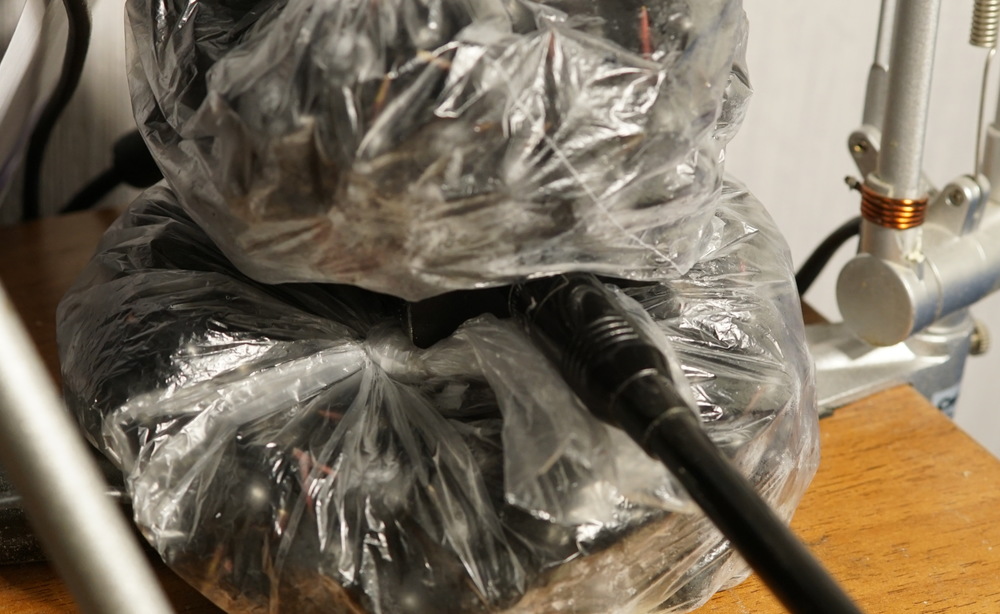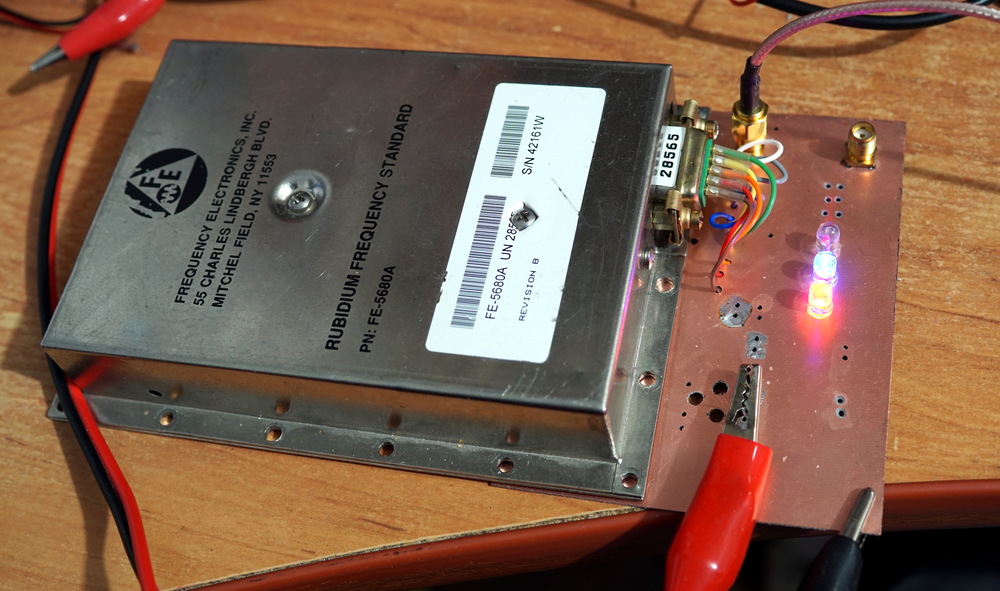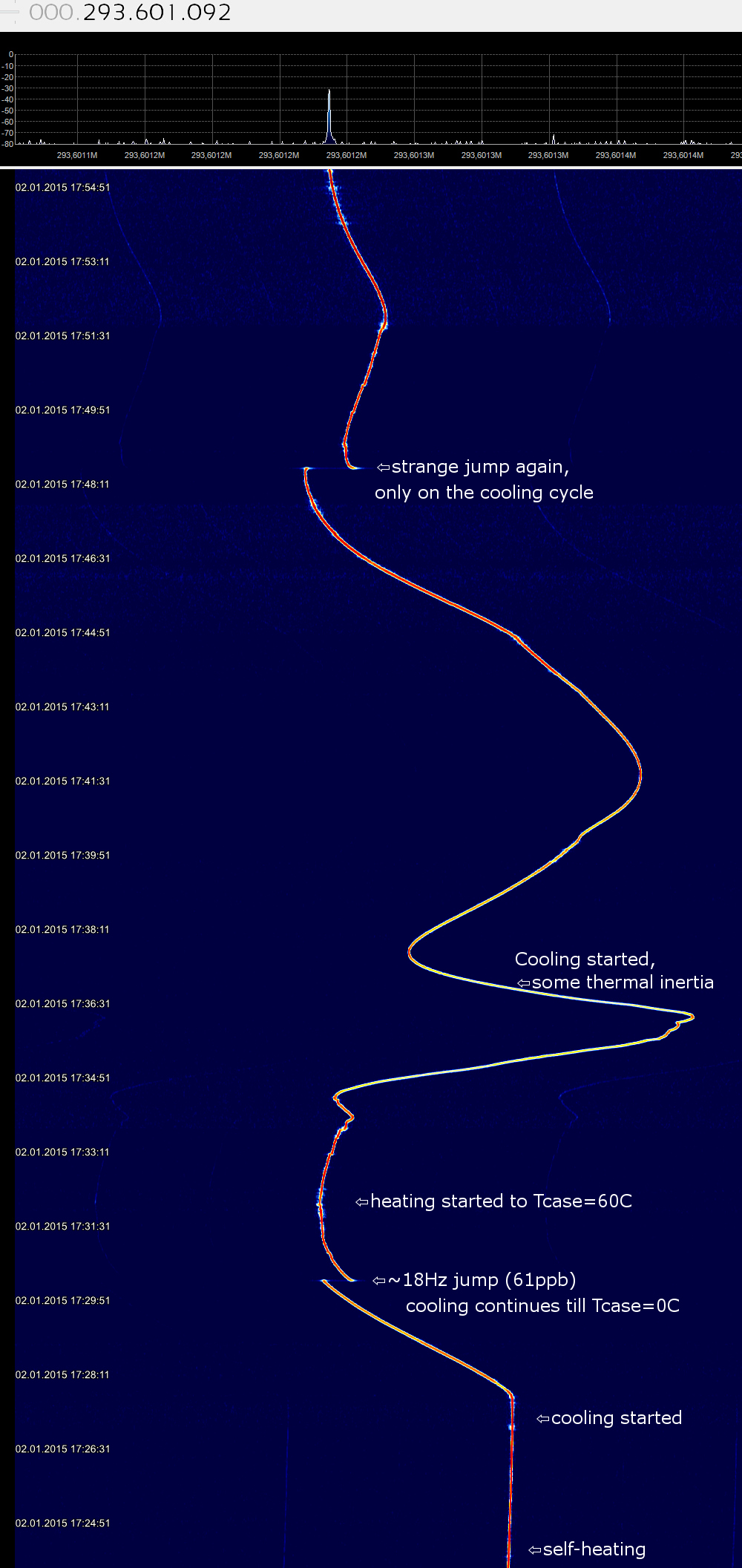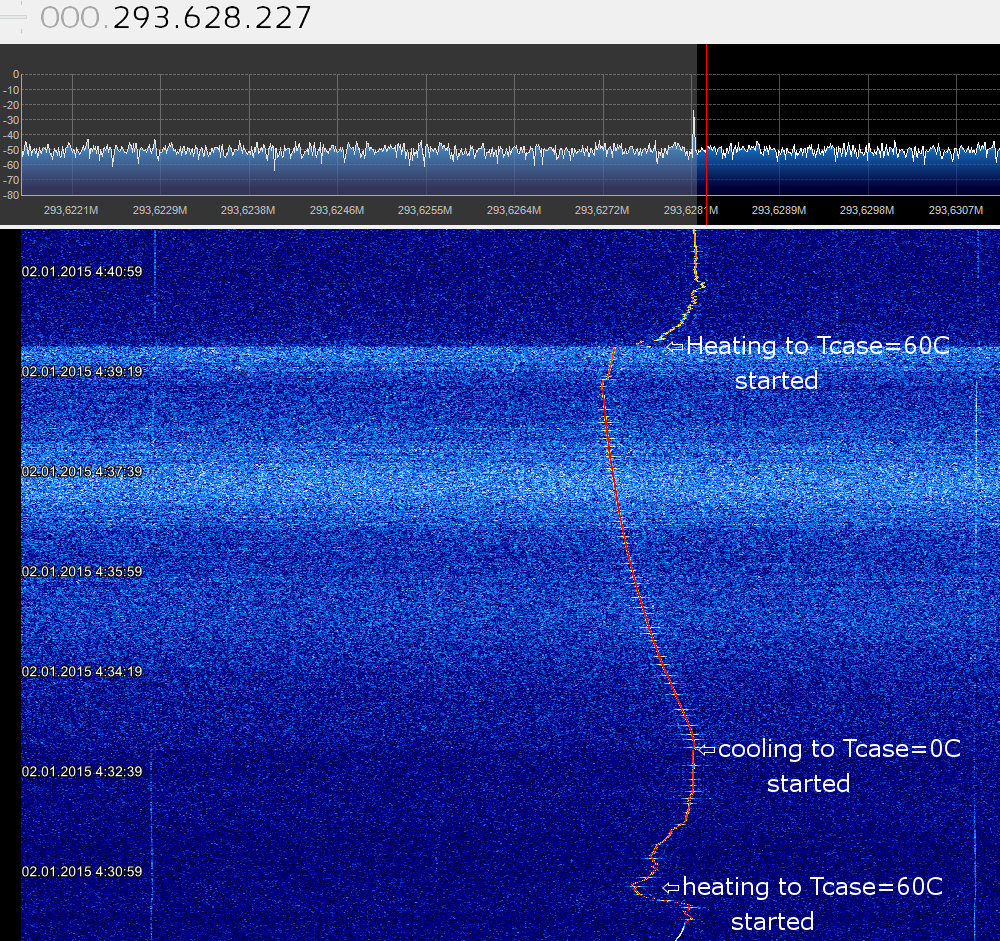Temperature stability of AirSpy SDR receiver
Recently I got AirSpy SDR-receiver : it has 20Mhz/12bit ADC which is a significant improvement to 2.4Mhz/8-bit one in RTL2832-based devices. Capture bandwidth is 9Mhz. Also, it uses TCXO with 1.5ppm frequency error spec. In this article I focus on it's frequency error vs temperature.BTW, for the first time in human history we have blueberry-cooled electronics:


Here are frequency errors. I was measuring 35-th harmonic of FE-5680A rubidium frequency standard generating 2^23 Hz, i.e. ideal frequency should have been 8192*1024*35=293'601'280 Hz.
| Hardware | Quartz (E4000+RTL2832) | AirSpy TCXO |
| After warm-up | 293'627'555 Hz +89.49ppm | 293'601'318 Hz +0.129ppm |
| Tcase ~0C | 293'626'824 Hz +87.00ppm | 293'601'185 Hz -0.324ppm |
| Tcase ~60С | 293'628'227 Hz +91.78ppm | 293'601'386 Hz +0.361ppm |
This is FE-5680A used during the test. I'll try to write about it's modification and interface board later...

AirSpy TCXO
Temperature coefficient is quite nonlinear in cold (<10C) and hot(>45C) regions. Also, there is a ~0.061ppm jump in frequency during every cool-down period (at Tcase of ~5-10C ). Once I even observed 3 smaller jumps instead of 1 larger. Anyway, frequency error is well within 1.5ppm datasheet spec.
Quartz (E4000+RTL2832)
Temperature coefficient appeared to be much smaller than I expected, and more linear/monotonic. Obviously it lacks factory precalibration, so base frequency error is quite large. Temperature-induced frequency error is 7 times worse than AirSpy's TCXO. Note that frequency scale is different.
Resume
AirSpy looks good in terms of frequency stability - with it's perfect factory calibration, and better-then-datasheet frequency error (0.361 vs 1.5ppm). Comparing to quartz it's initial accuracy is 2 orders of magnitude better, and temperature-induced frequency shift is 7 times better (0.685ppm total vs 4.78ppm).Phase noise comparison is still an open question.





 @BarsMonster
@BarsMonster